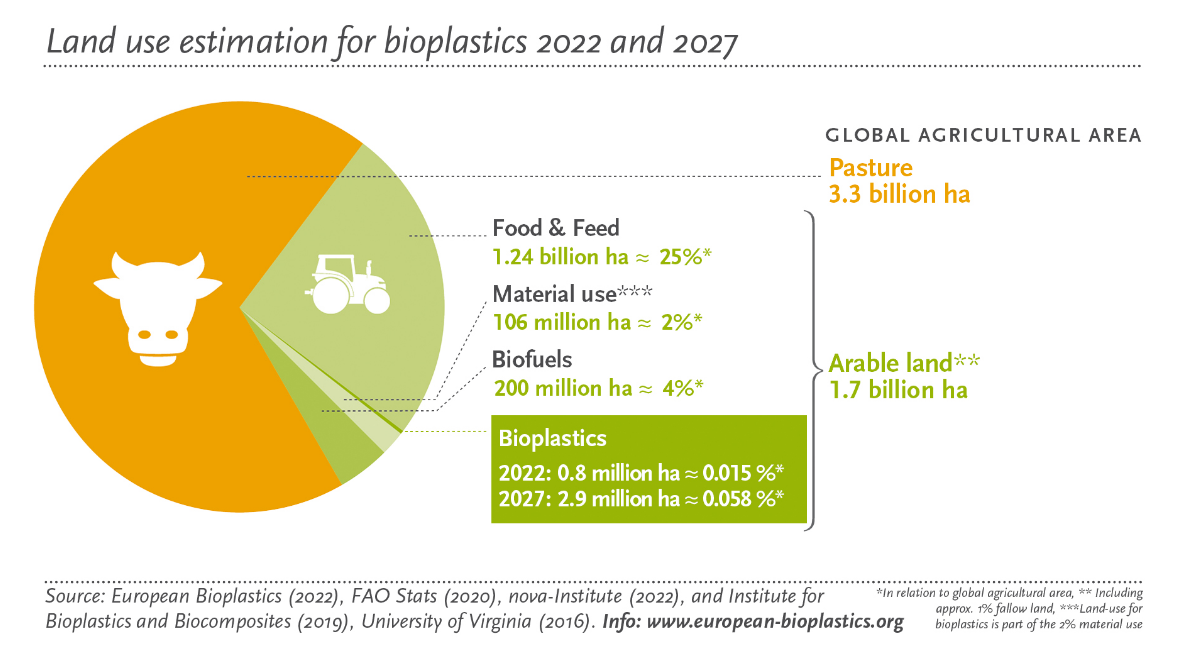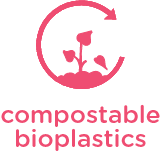The Scoop on Bioplastics:
Our goal is to reduce the use of fossil fuels in everyday items.
Biodegradable. Drop-in. Oxo-Degradable. Bio based plastics. Compostable. Plant-based.
Talk about epic confusion for the customer! These terms get thrown around interchangeably quite a bit, but they don’t always mean the same thing.
First things first. You'll hear us say both “bio-based” and "plant-based" when we’re talking about types of bioplastic, depending on how science-y the convo is. The bottom line is that plants and agricultural byproducts are the most common raw materials being used to make most bioplastics today. And to keep things simple, we talk about the percentage of “plant-based” and recycled content in our products and packaging because it's easy for all of us to understand that a higher percentage is better, even if you skipped the quantum biopolymer engineering class at school. 🤓
So now let’s talk about what bioplastic actually is. Or what it isn't. For starters, the raw materials used for bioplastics are typically more scrutinized than what you hear about when it comes to petroleum-based plastics.
Bioplastics are made, at least in part, from renewable, plant-based resources like corn or sugarcane, like our BPI certified compostable packaging made from certified sustainable feedstocks. Instead of relying on fossil fuels that take millions of years to form, bio-based plastics start with renewable resources that can grow back quickly again and again. 💚
Here's the most important part. We've seen some peeps say their products are "not plastic" if they're made with PLA (Polylactic acid) or PHA (Polyhydroxyalkanoates - excellent spelling bee party word, btw 🐝). This is not accurate and doesn't help build trust for businesses and consumers to make eco-friendly choices that include plant-based plastics.
It's actually super simple. If a material has "poly" in its name, you can bet that baby is plastic. Ultimately, plastics aren't aways the bad guy, and they have an important role to play in many industries, including medical and food protection. It's how we make, use and dispose of plastics that is begging for a ginormous makeover, and we believe plant-based plastics are part of the solution.
Two Kinds of Bioplastics:
Bioplastics can be both curbside recyclable AND compostable.
To help simplify things, we divide bioplastics into two major categories: curbside recyclable bioplastics and closed-loop compostable bioplastics. Each type offers unique benefits depending on the product application and the requirements for end-of-life disposal. Both can help you meet the sustainability objectives that are most important to you.
Curbside Recyclable Bioplastics: These are designed to be seamlessly recycled with traditional plastics and are chemically identical in every way - except that one uses petroleum as a raw material and the other uses at least 20% renewable, plant-based content.
Materials like Bio-PET #1 and Bio-HDPE #2 don't need to be separated from traditional PET #1 or HDPE #2 in recycling streams. For example, our Bio-PET packaging sports the same PET #1 symbol you're used to, and PET #1 is the most widely accepted material in North America's curbside recycling programs. This makes it an excellent choice for businesses wanting to meet retail and regional requirements for curbside recyclability, and we can also mix in up to 25% PCR (post-consumer recycled content) for extra sizzle. 🕺
Closed Loop Compostable Bioplastics: These materials, such as PLA (Polylactic acid), can biodegrade within a set timeframe, which for the most part today in North America means they'll break down in an industrial composting facility within 180 days. Closed-loop compostable bioplastics offer a full-circle sustainability solution, which can be especially helpful for food packaging where used containers have bits of food residue. Packaging that contains food waste can be very expensive to clean and repurpose given the recycling infrastructure in much of North America.
Certified compostable packaging that's processed in an industrial composting facility can provide soil for new plant growth. This type of packaging, and PLA in particular due to its affordability, is popular for its very high renewable, plant-based content that supports a circular economy.
Both types of bioplastic have a role to play in helping us change how we design packaging and minimize plastic pollution. Through both recycling and composting, bioplastics provide sustainable end-of-life options and have the added boost of using more renewable resources and less fossil fuel.
The Future of Bioplastics:
Looking to the horizon, advanced materials will transform packaging further.
The future development of advanced materials promises to bring even more flexibility and affordability to our collective efforts to reduce our carbon footprint and plastic waste. Innovations like PLA blends are being designed for home compostability and represent a next generation of adaptable, eco-friendly materials. These blends will be able to break down in backyard composting systems, which will provide another positive end-of-life option for businesses and consumers looking to reduce their environmental footprint.
Our goal is to make it as easy and affordable for you to make the switch to renewable materials instead of petroleum, where possible. That means we make it part of our job to keep our eye on all these innovations and bring them to you when they're ready for full-scale commercial applications.
Emerging bioplastics such as PBS and PHA are also gaining attention, although they're often still pretty darn expensive.💰 Additionally, the use of waste streams as feedstock—such as forestry byproducts, fringe crops and even landfill waste itself—are all being explored as new avenues for creating bioplastics.
Like waiting for the perfect smartphone, tech upgrades are coming fast to make new things possible with bio-based materials, but we don't have to wait for nirvana to take the steps we can today to do better for the planet.
Interested in exploring how bioplastics can help you achieve your sustainability goals? Contact us to discuss how we can create a packaging solution that's made just for you. 🌟




